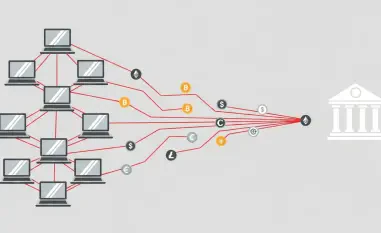In today’s digital era, where information is both power and currency, cyber espionage has emerged as a formidable threat, particularly in regions like South Asia. Cyber threat groups, with their sophisticated toolkits and strategies, are systematically infiltrating government agencies, military units, and key industries. This article explores the evolving landscape of cyber espionage in South Asia, examining current trends, real-world applications, and expected future developments, highlighting the strategic importance of understanding these methods.
Overview of Cyber Espionage in South Asia
Current Landscape and Growth Trends
Cyber espionage in South Asia has witnessed significant evolution, becoming increasingly structured and coordinated. Various studies highlight a surge in such activities, driven by improved technological access and entrenched geopolitical tensions. Reports indicate that groups like UNG0002 are leading operations primarily targeting sectors in China, Hong Kong, and Pakistan. With advancing methods, including the use of shortcut files (LNK), VBScript, and popular post-exploitation tools like Cobalt Strike and Metasploit, cyber espionage has become a prevalent tactic in the region. Recent campaigns demonstrate a persistently growing threat, scaling beyond traditional espionage methods, reflecting a regional trend toward acquiring sensitive data and intellectual property.
Real-World Applications and Case Studies
The real-world application of cyber espionage tactics in South Asia is both extensive and deeply concerning. Notable campaigns like Operation Cobalt Whisper and Operation AmberMist exemplify the intricate strategies developed by UNG0002. These operations utilized spear-phishing techniques, leveraging disguise elements such as decoy documents to initiate multi-stage infections. For instance, Operation Cobalt Whisper, conducted between May and September 2024, delivered Cobalt Strike beacons via compromised ZIP archives. Similarly, Operation AmberMist adopted LNK files disguised as CVs to deploy the INET RAT and Blister DLL loader. Such incidents showcase the group’s expertise in breaching systems and reflect a growing sophistication in cyber espionage within the region.
Expert Insights and Industry Opinions
Insights from cybersecurity experts have consistently underscored the gravity of this growing trend, accentuating both its technical implications and geopolitical repercussions. Thought leaders emphasize the strategic intent behind these cyber espionage tactics, noting their devastating potential if left unmitigated. Industry professionals recognize the evolving threat environment, necessitating robust defenses and vigilance. They advocate for intensified cooperation among South Asian countries to enhance cybersecurity frameworks, stressing the importance of collective intelligence-sharing to counter such formidable adversaries. The insights serve as reminders of the pressing challenges posed by cyber espionage and the urgent need for comprehensive solutions in response.
Future of Cyber Espionage Tactics
The future trajectory of cyber espionage in South Asia is fraught with both opportunities and challenges. As tactics continue to evolve, industries spanning defense, energy, and healthcare might encounter heightened risks, demanding a proactive stance. The increased use of artificial intelligence and machine learning can potentially enhance both attack and defense mechanisms, creating a dynamic battlefield. While the benefits of such technological advancements can bolster protective measures, they simultaneously pave the way for more sophisticated attacks. In light of these developments, the cybersecurity landscape must remain vigilant, continuously adapting to changing threats to safeguard national and organizational interests.
Conclusion and Takeaways
The analysis of cyber espionage tactics in South Asia reveals a complex landscape marked by evolving threats and sophisticated methodologies. Reflecting on the significance of this trend, it becomes imperative to bolster cybersecurity initiatives and maintain a proactive stance. Understanding the nuances of these espionage strategies allows countries and industries to anticipate potential breaches and fortify their defenses. As the region faces persistent challenges, fostering collaboration, investing in research, and embracing advanced technologies will be crucial in combating the ongoing threat. Ensuring resilience against cyber espionage within South Asia remains a matter of strategic importance, warranting continued attention and resource allocation.













